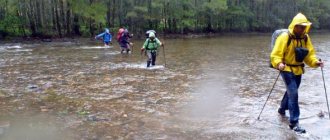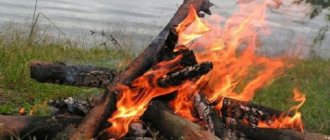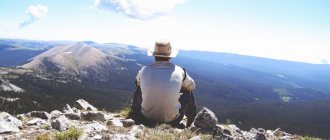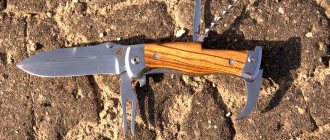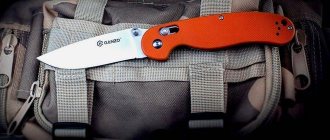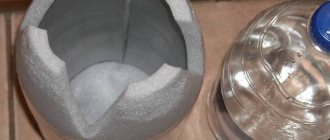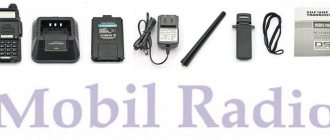First of all, a few disclaimers. Firstly, this article is for those who are going on their first trip to the mountains. There will not be a detailed analysis and comparison of the advantages of some models of backpacks, sleeping bags, membrane jackets, although there will be links to such articles. Inveterate tourists will not discover anything fundamentally new, but sometimes updating and structuring obvious information can be useful.
Secondly, we will talk specifically about entry-level hiking in the mountains, without extreme climbs that require special equipment.
Finally, everything is individual, any article and list of equipment serves only as a hint. You make the final decision on what to take yourself, and then you yourself bear both everything you have collected and responsibility for this decision.
Don’t forget, in order to decide how to go on a hike, you need to answer for yourself - where, with whom and when to go on your first hike. We figured it out, now about the training camp.
On any hike, the basis for a comfortable existence is well-chosen equipment. Those who have been hiking recently or are planning to conquer a new region should carefully study the list of equipment in advance. It lists all the basic things you need to take with you. Such lists are compiled for each hike on the website of the PIK Tourist Club.
Remember : on a hike, the personal comfort and health of each participant is a common issue. If your backpack does not fit public equipment, or if you, on the contrary, put too much cargo and will fall behind, rub your leg, or something more serious will happen - it is not your personal business. These are problems that the whole group will have to solve. Therefore, it is important to competently approach the choice of at least the basic elements of equipment.
Hiking equipment
- Backpack for a long hike (90 l - men, 70 l - women) with a belt. Choosing a backpack is a responsible matter. Nobody goes camping with rolling suitcases these days, even if it's Louis Vuitton. It is important that the backpack fits you well, has an adjustable back and a comfortable strap that allows you to transfer the main weight from your shoulders to your hips. Color, brand and the presence of pockets are pleasant, but not the most important parameters.
Separately, about the volume (it is measured in liters) - you cannot take a backpack that is too small on a long hike - you will have to carry part of the public equipment or provisions, in addition to personal belongings. Hanging most of the cargo outside the backpack is not only bad manners, but also unsafe - the center of gravity shifts, the risk of getting caught on something and losing balance increases, as well as getting wet and damaging valuable cargo. But you shouldn’t take a backpack that’s too big - it’s hard to avoid the temptation to take extra things from home - lighten your backpack! It can be even more difficult to resist the temptation of other participants or the instructor to distribute as much cargo as possible into the largest backpack.
- A backpack cover is a thing that will protect your things from getting wet in the rain, at least it will try. When hiking in dry areas (Crimea, Turkey), it can be neglected, but it is better to have it with you in case of an unexpected downpour. The cape will also help protect your fashionable backpack from dust and dirt.
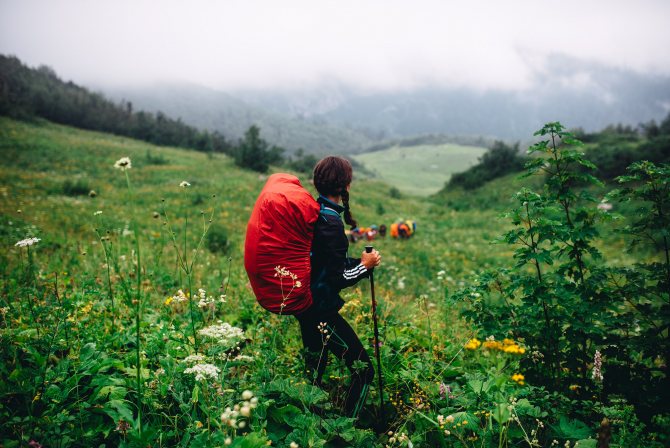
- Sleeping bag (with the comfort temperature specified for a specific hike). It is important to pay attention to the weight of the sleeping bag, materials and comfort temperature. This is the temperature at which the average tourist sleeps peacefully in a sleeping bag without waking up from the cold. It differs for men and women. The sleeping bag usually also indicates the maximum (above which it will be hot) and extreme temperature (below which it will be very cold). Since comfortable sleep is the most important part of a tourist’s life, you should not skimp on a sleeping bag.
- Compression bag . Packing with multiple straps allows you to significantly reduce the volume of the sleeping bag so that it takes up less space in your backpack. You should not leave a compressed sleeping bag in it for a long time after a hike. When you return home, undo the straps, otherwise the seams may come apart and the insulation will lose its properties.
- Foam ( tourist rug ). Protects tourists from the negative impact of the environment from below, during sleep and rest. Simply put: they lie on it, and it protects from cold, dampness and (if possible) uneven terrain. Rugs can be solid, made from several layers of polyurethane foam, folding, inflatable - for every taste. Despite its apparent simplicity, this element of equipment cannot be neglected - sleeping without it is extremely uncomfortable and unsafe for health. Do not take yoga mats on a hike - they are thin, relatively heavy, and will not protect you from the cold or sharp stones.
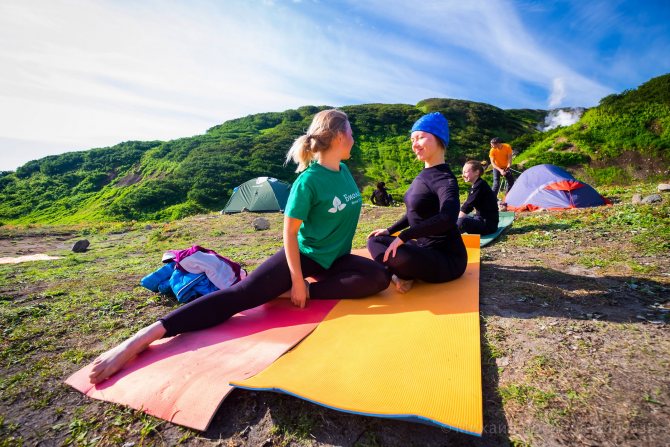
- The seat is a piece of foam with attached elastic bands for wearing on the belt. Its main, but far from its only purpose is to sit on it, and it protects the tourist’s seat from cold and sharp objects. Perhaps this is the most multifunctional piece of equipment! In addition to its main use, you can kneel on it, change clothes, and protect your back when traveling in a shaking car. It's great for fanning a fire, it's a tray, a cutting board, a racket, an umbrella - anything, if you use your imagination. It weighs and takes up little space, but the benefits are enormous.
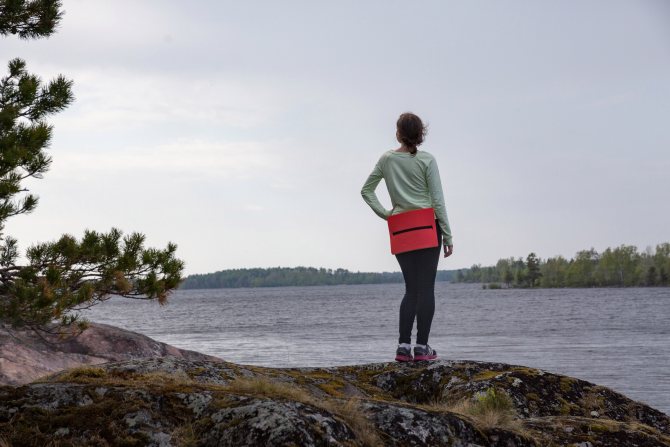
- Trekking poles - help to transfer part of the weight to your hands when walking, to maintain balance on descents, ascents, rocky places, and when wading. Pay attention to the possibility and method of adjusting the length, handles and lanyards, tips and weight of the poles.
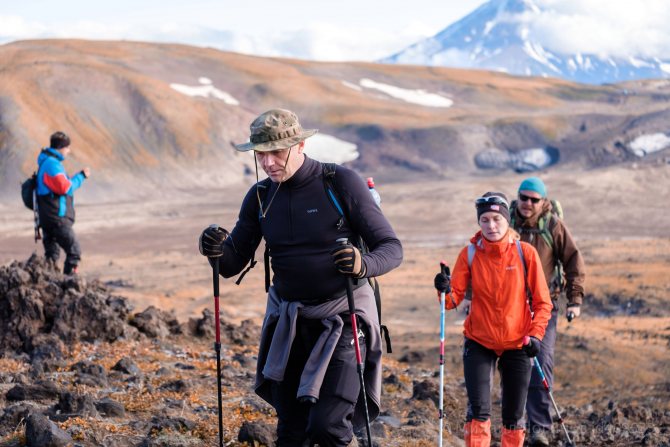
- LED headlamp. A must-have for every tourist, even if you are going on a hike to the Khibiny Mountains at the height of the polar day. There is hardly any need to explain the significance of this item and the convenience of the head-mounted option. In short, everyone should definitely take it. And don’t forget spare batteries (of the right size) - they will be useful not only for you, but also for your friend.
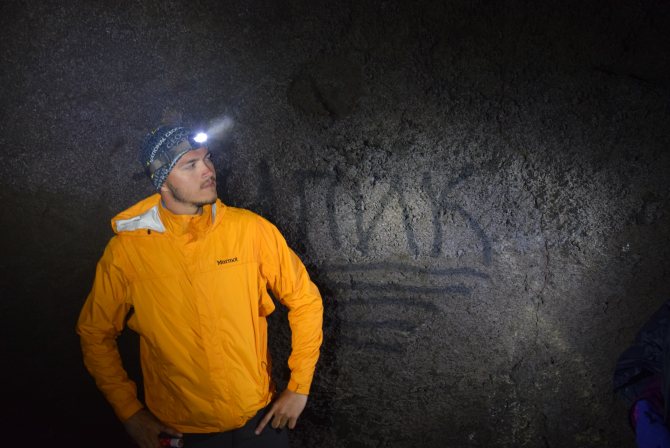
- Backpack for radial exits . If you are planning radial trips, take a special backpack for them. You should not make special demands on it - it is important that it is light and rolls up well. He will spend most of the hike folded, inside the main backpack. The volume should not exceed 20-30 liters; there is no need for more on radials. A waist belt and an anatomical backrest are not necessary - this will greatly interfere with packing it inside the backpack, and the load in the radials is not very heavy.
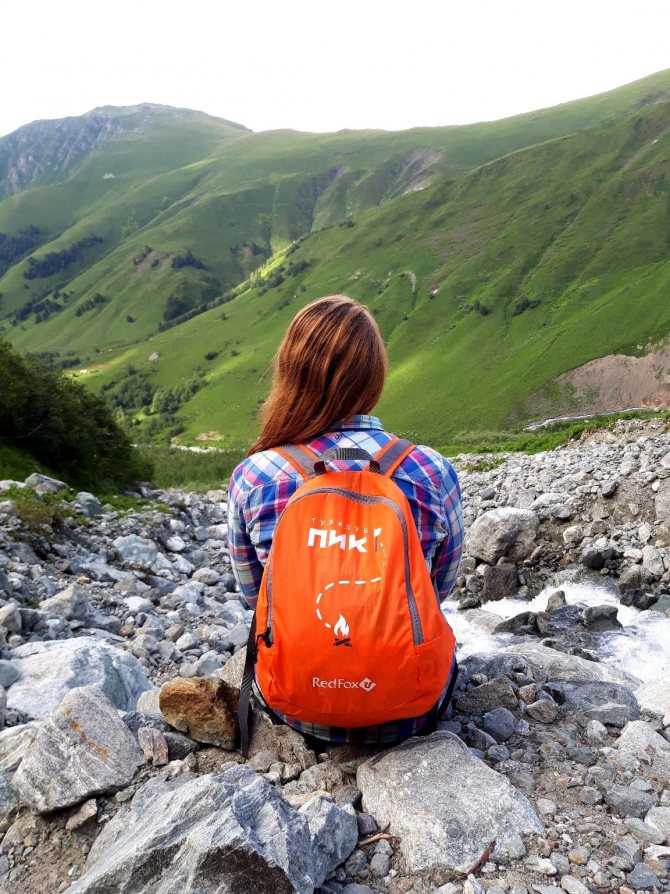
- Tent . As a rule, tents are provided by the tourist club, but if you want to take your own, check with the organizers whether its parameters are suitable for a particular hike. Check the functionality of the zippers, the integrity of the fabric and arcs in advance. Pay attention to its weight, while not forgetting about wind resistance, moisture protection, ventilation and mosquito nets.

- Polyethylene and other waterproof bags. Although the cape and fabric of the backpack, to some extent, protect things from moisture, in case of heavy rains additional protection is required. The most reliable are the hermetic bags used in water tourism, but they weigh quite a lot and take up a lot of space. You can simply hide especially valuable items in plastic bags. They weigh little, compress well, but also tear well. In any case, the bags will be useful to you one way or another.
Base layer
This is a layer that is adjacent directly to the body and is represented by different options for thermal underwear (or more precisely, functional underwear ). The main task of this layer is to wick sweat outward and thereby maintain a feeling of comfort and reduce heat loss in cold weather and/or not interfere with the body’s natural thermoregulation (depending on the type of functional underwear). As you well know, during exercise, the body produces excess heat and, in order to avoid overheating, the sweating mechanism is activated. Sweat evaporates from the surface of the skin and cools the body.
There are 2 main characteristics of thermal underwear: sweat-wicking (or moisture-wicking) function (when thermal underwear comes into contact with the skin, sweat is absorbed, but due to the special qualities of the fabric, it is not stored inside, but is transported to the outer surface of the thermal underwear and evenly distributed over it for rapid evaporation) and the ability to retain heat . These parameters depend on the composition of the fabric and the weave of the fiber. Accordingly, depending on the main purpose, thermal underwear is divided into heat retention, moisture removal and combined. In addition, each manufacturer has a wide variety of models created for a specific use (for example, sports, everyday wear, and so on) and each model has its own name. It is worth mentioning that thermal underwear made of synthetic materials copes better with moisture removal, while models made of natural materials retain heat better.
When choosing thermal underwear, you need to pay attention to the quality of the seams; the thermal underwear should fit snugly enough to the body, but not limit movement; when bending/squatting, the lower back should remain closed.
Cloth
Previously, we wrote in detail about how to dress for a hike, but here is just a comprehensive list of the most important things.
- Sleepwear . As already written above, a comfortable sleep is extremely necessary to restore a tourist’s strength (and simply have a good mood). Take soft sleepwear that wicks moisture away from the body, without compressive elastic bands. You should not sleep in the clothes you spent the day in, especially if you are wet, sweaty and dirty.
- Underwear . Quite a delicate but important topic. Without going into intimate details, we advise you to take comfortable, tested underwear that does not rub or pinch any parts of the body. Don't take too much - you can usually arrange a wash, but not too little so as not to cause discomfort. We remind girls that you are already beautiful. When choosing underwear for a hike, it is better to give preference to a comfortable set than the most attractive one, but not designed for long-term wear.
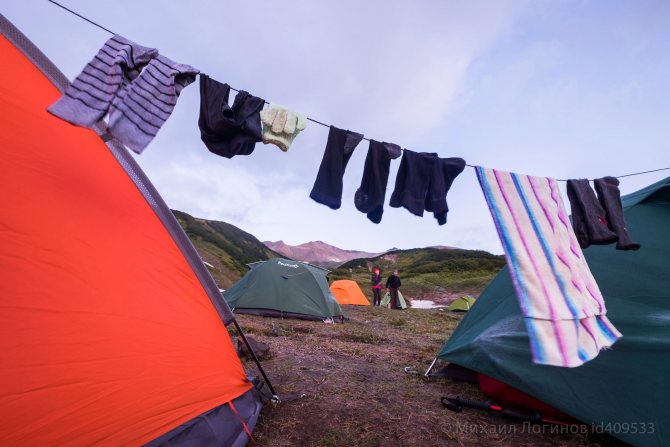
- T-shirt . 2-4 pieces, depending on the duration of the hike and what other thermal underwear you take. Cotton is more pleasant to the body than synthetics.
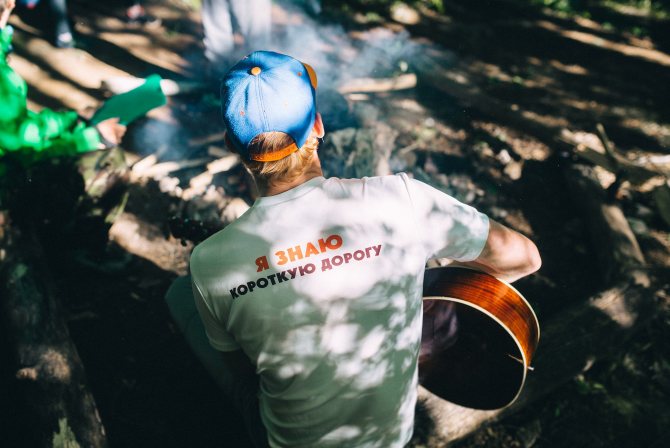
- Thermal foot block . You can only use one - it washes quickly and dries quickly. Helps wick moisture away from the body during transitions.
- Thermal underwear e. Take several sets with you - for transitions, for sleeping. It varies in thickness, material, action and price. Thermal underwear can only help remove and evaporate moisture, it can provide warmth, or maybe both. In any case, it helps to maintain comfort and warmth.
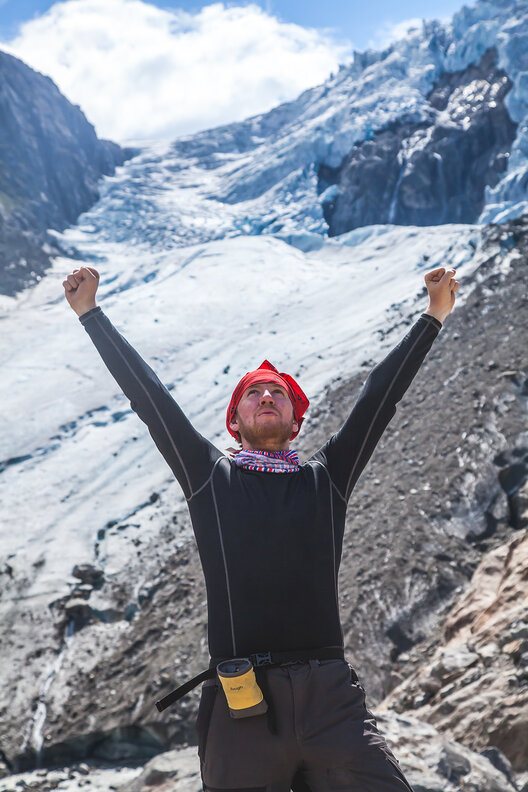
- Long sleeve shirt , light jacket, vest. It’s up to your taste and choice, the main thing is that it keeps you warm in not the coldest weather, and protects you from the sun, bushes and insects while crossing.
- Socks . Since we are talking about hiking, it is extremely important to take care of your feet to be successful. During the trek, you should wear comfortable trekking or thermal socks - they allow you to wick away moisture (we never tire of writing this), prevent your feet from chafing, and keep you warm in the cold. Even after wading in cold water, good socks will not lose their properties, will help you quickly warm up and will not rub your feet. For the evening, prepare softer and warmer socks: woolen or thick thermal socks. You won’t have to walk a lot, but giving your feet a rest and warming them up is priceless.
- Trousers . We divide them into three categories: lower running gear: thermal underwear and its variations;
- upper suspension: protect from wind, moisture and do not tear on bushes and stones. When it’s warm, they can be used without thermal underwear and as pants for camp.
- for camp: warm pants, fleece or Polartek.
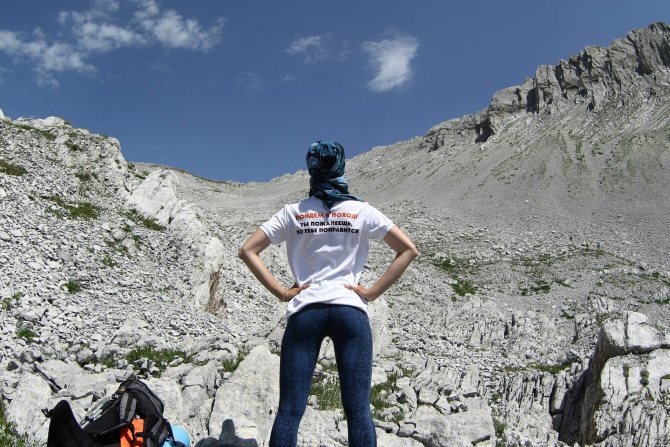
- Shorts . Comfortable, non-staining shorts are useful for hiking in warm areas, in a camp, or on radials. If you are hiking in Turkey or Crimea, you often wear shorts while crossing. In this case, choose them more carefully, wear them with a backpack in advance.
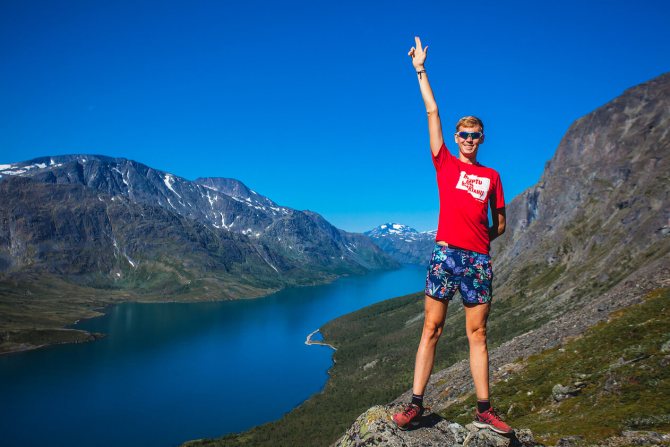
- Warm jacket or sweater . A must-have item for any hike. Depending on the total weight of the cargo and the region, decide whether to choose a fleece or a sweater.
- The jacket is windproof and waterproof (storm jacket or jacket with a membrane). It is also an indispensable piece of clothing – both on the march and in the camp. Pay attention to the presence of ventilation elements, the quality of the membrane, and the water column that the jacket holds. Okay, okay, and the color too: after all, a good mood and beautiful photographs are a significant part of the trip.
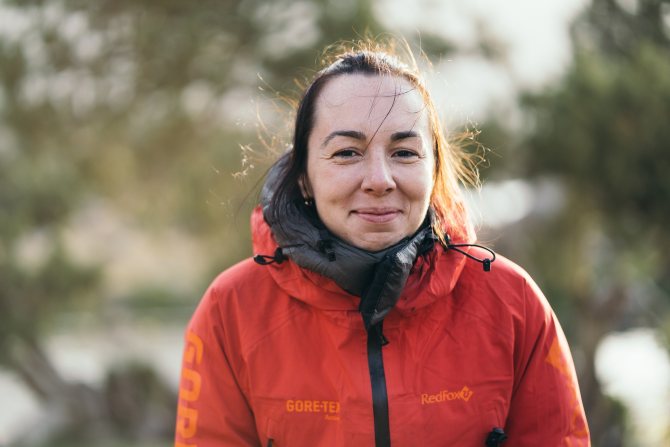
- Rain cape with hood. No matter how high-quality your jacket is, an additional light cape or raincoat with a hood will not hurt - during heavy rains any clothing gets wet. If the cape covers both you and your backpack, this is a great option.
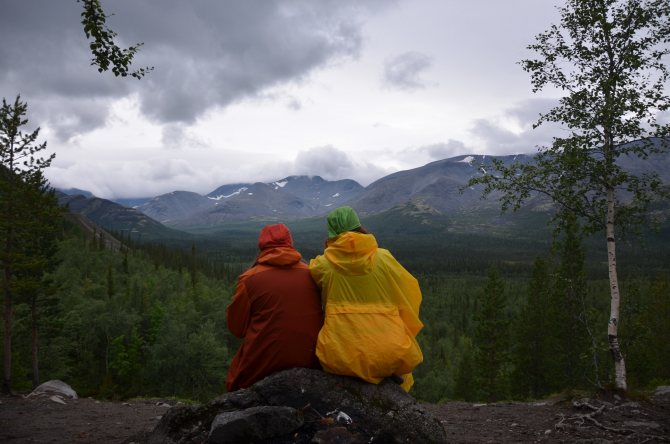
- Swimming suit (swimsuit, swimming trunks). On any trip, you will most likely have the opportunity to swim - in a river, lake, ocean, hot springs, or just in a bathhouse. Since the team is usually mixed, they usually take swimming trunks or a swimsuit with them so as not to embarrass others.
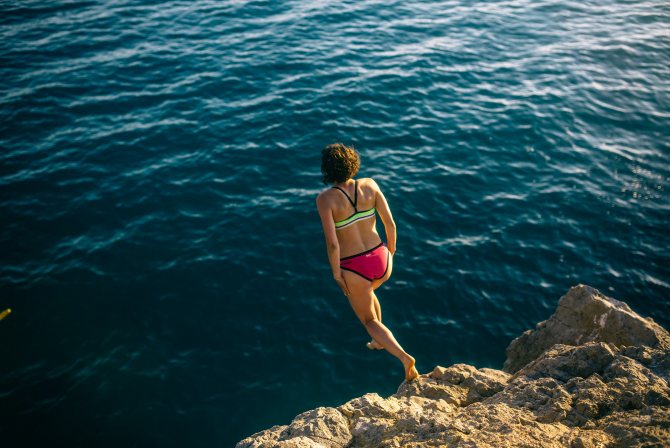
- Gloves . Everyone, even girls, will have to do some kind of work around the camp during the hike. To protect your hands, wear good work gloves. It is more convenient to saw in them, carry firewood, and carry a boiler with water. They will protect from heat during cooking or when removing the pot from the heat. It is better to take thicker and more reliable gloves than simple gardening gloves - they quickly become unusable. Don’t forget about regular gloves for trekking – to warm your hands and not get scratched on rocks and bushes.
- Buff . It will protect your neck and head from the sun, wind, bites and cuts, but not only. You can find many uses for it on a hike – no less than a seat.
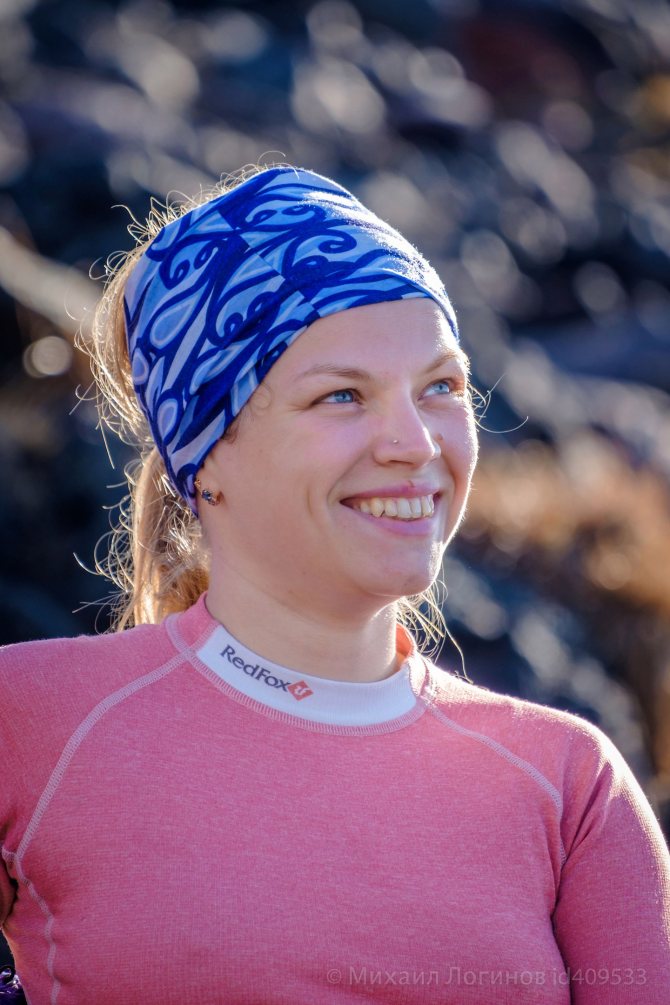
- Headdress . A hat, cap, panama or bandana protects you during the day from sun rays, rain and wind. And for the evening or in cold weather, a warm soft hat is suitable. Remember that a person loses most of their heat through their head.
- Dress . Yes, yes, a beautiful light dress is often included in the list of must-have equipment (for girls only). In warm climates, it will brighten up the evening on your figure, and when climbing, it will provide incredible photos at the top and admiring glances from the male part of the team.

The main thing in hiking clothes is comfort, light weight and non-staining. Don't take too much, put smaller clothes and find an opportunity to wash them. Don’t be afraid to get your clothes dirty and damaged – this is a Sparta hike.
What is travel clothing
In the days of mammoth hunters, any loincloth or animal skin could be called outdoor clothing. And this is understandable: the dwelling of our distant ancestor was more like a tent camp or a parking lot, and primitive man simply could not go out the door due to the absence of these very “doors”.
However, the rapid development of civilization led to the emergence of comfortable settlements with doors that divided the world into “in” and “out”. Those who chose “in” were limited to routes between the shower and silk sheets. Those who neglected comfort and decided to stay outside the door received the proud name of a tourist and the right to live according to the laws of their ancestors - to wander through the forests, climb mountains, raft down rivers and sleep under a tree in a skin that smelled of sweat and smoke.

A pampered city dweller turned the harsh equipment of a proud hunter into the colorful plumage of a parrot, equipped it with ridiculous decorations and completely deprived it of any functionality. Therefore, only those that are now known as tourist clothing can be called real clothing. Let's talk about her.
Shoes
- Trekking boots . Separate articles are devoted to the art of choosing shoes. Here we will limit ourselves to short information: trekking boots must be the right size, suitable for your foot, fix the ankle, have a textured non-slip sole, and be sure to be worn in in advance!!! The latter is extremely important for comfortable wearing.
- Sandals , flip-flops. To give your feet a rest, you can (and should) wear light shoes in the camp. For example, wearing hiking sandals with good soles and a secure fit on your feet. Then you can not only walk around the camp in them, but also on simple radials in warm climates. Often these sandals (with neoprene socks) are worn on single fords so as not to get the boots wet. But if you have very little walking to do, just from the fire to the tent, you can take something very light: flip-flops or even train slippers.
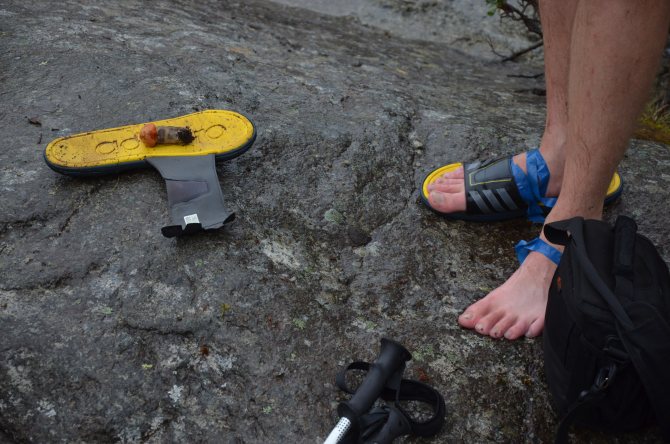
- Sneakers . They are an alternative to sandals and a backup option in case your shoes suddenly get damaged. Your legs don’t rest as well as they do in flip-flops, but they are more comfortable for running in the mountains without a backpack.
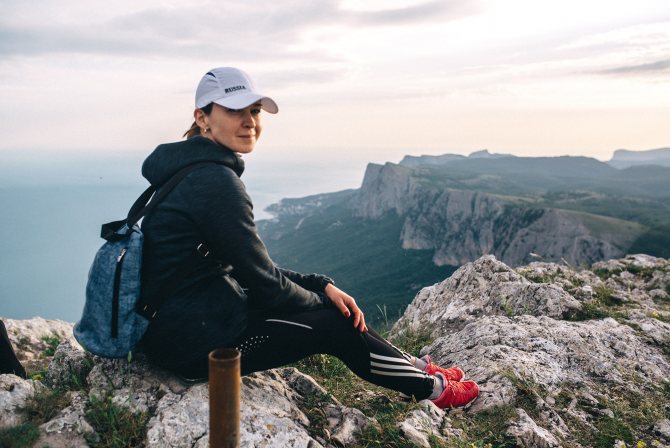
- Gaiters (shoe covers, flashlights). Although gaiters are not shoes in the strict sense, they are directly adjacent to it. They are worn on the bottom of the pants during the transition, and are often additionally attached with an elastic band to the boots. Protects pants and boots from dirt, moisture and snow. It is important that they are durable, do not get wet and do not slip when walking. Naturally, they are not mandatory for warm and dry areas.

Review of the best hiking shoes
Trekking boots Asolo Greenwood GV Major Brown
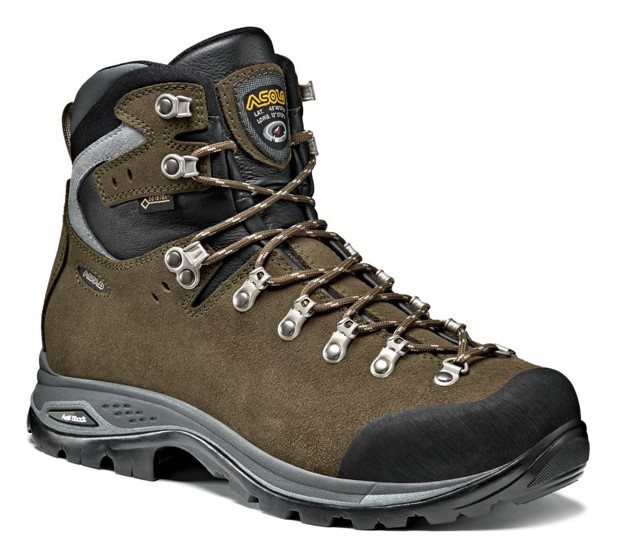
A product of the Italian company Asolo, specializing in the manufacture of durable, reliable shoes for hiking and mountaineering. The average cost is 13,993 rubles.
Trekking boots Asolo Greenwood GV Major Brown
Advantages:
- use of modern technologies;
- high quality product;
- full-cut leather upper;
- do not get wet;
- the sole provides reliable grip on the stone surface;
- presence of a membrane layer;
- self-cleaning protector;
- comfortable use.
Flaws:
- high price.
Arcteryx trekking shoes
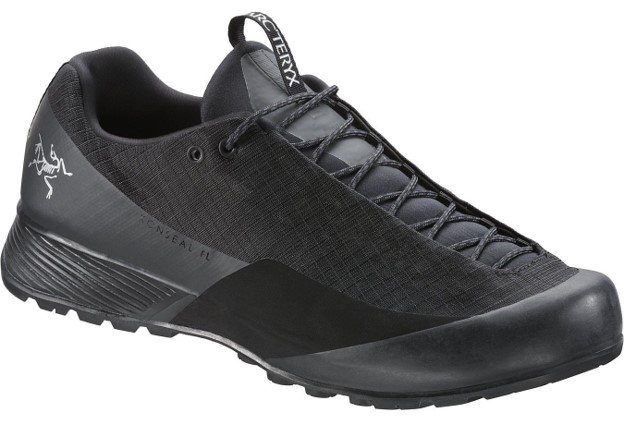
The product is made using membrane fabric. The sole cushions and absorbs the impact of the foot on the ground. The lacing holds the shoe tightly to the foot. The average cost is 8340 rubles.
Arcteryx trekking shoes
Advantages:
- well ventilated:
- are protected from moisture;
- does not blow through the wind;
- comfortable wearing;
- protection of the bow from impacts of toes on rocks;
- wear resistance of the sole.
Flaws:
- not detected.
Useful personal trifles
- A set of utensils (mug, spoon, bowl, knife or KLMN). Meals on a hike rarely take place in restaurants where a set of dishes is waiting for you; you need to take everything with you. The family porcelain set is not entirely suitable for this purpose. You can limit yourself to: a mug (some people like thermal mugs, but they are more expensive, heavier, larger and you can’t warm your hands on them),
- spoon (as lightly as possible, but so as not to bend or break),
- a bowl of sufficient volume (so that there is enough volume for the contents of the ladle).
- knife – desirable, but not required. Knives will always be found in public campfire equipment. Although a good knife has never been superfluous on a hike. Do not take disposable tableware - it will not last even the first dinner. High-quality metal utensils are often no heavier than plastic ones, but eating from them is more pleasant and easier to clean. When choosing dishes, look at how you will pack them - if the mug and spoon fit well in the bowl, the whole set will take up less space.
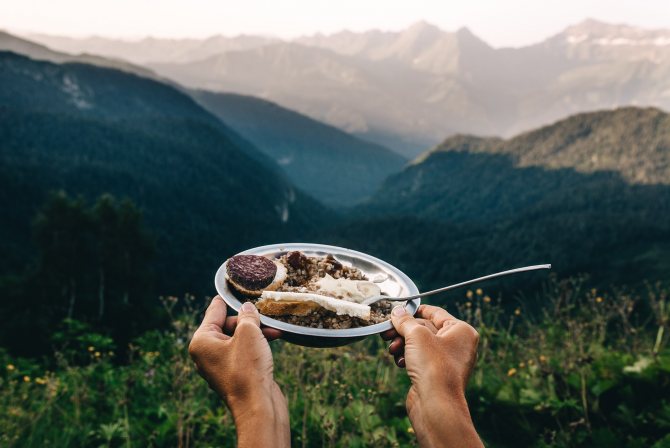
- Bag for dishes (zhorik). All dishes need to be carried in something. Get a special bag for this. A regular plastic bag is suitable for the first time, but a bag with ties made of waterproof fabric is more convenient. So, all your dishes will be in one place, compactly folded. You won’t get other things wet or dirty if you didn’t have time to dry the dishes after washing, or even forgot to wash them, leaving this task for later.
- Plastic bottle . For carrying water during transitions. Lifehack: take two smaller bottles instead of one large one to place them on both sides of the backpack - otherwise it may overweight.
- Personal hygiene items : toilet paper, toothbrush and toothpaste (you can share the paste with a friend to carry less), wet wipes (or better yet, wet toilet paper - it decomposes quickly, unlike wet wipes). Every tourist should take all this with them. When using, remember the environment. Collect items that do not decompose into trash or burn them in a fire.
- Sunscreen , hygienic lipstick . The skin suffers from the sun and wind when hiking, even in cold climates. It is worth taking care of its safety. If we are talking about hiking in the southern regions, especially kayaking, sunscreen is an essential item.
- Personal first aid kit . Although on a hike the instructor must have a group first aid kit with him in case of serious illnesses, each tourist is recommended to have a personal first aid kit with proven medications for his favorite ailments. So as not to run to the instructor for a patch every time. And also, in case of an emergency, you might have to provide urgent assistance while the instructor is far away.
- Light towel . When taking a bathing suit, do not neglect a towel, light but large enough to change into. Towels made from modern materials are convenient for drying, they weigh little and take up very little space. Another classic writer wrote that a towel is the most important item in a tourist’s everyday life!
- Wrist watch . They are not mandatory equipment, but at least a few per group are required. We are used to finding out the time using our phone; when hiking, it is not always at hand. Choose a watch that is waterproof, shockproof, and backlit.
- Camera . If you know how to use a camera, during your hike you will be provided with magnificent shots for the memory and attention of others. Including after the hike: with requests to quickly share photos, post a wonderful (option: quickly delete the terrible) photo.
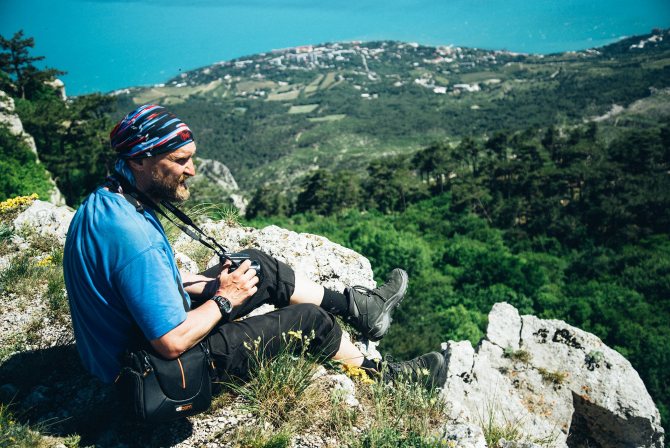
- Sunglasses . They may be needed not only in the south - high in the mountains the sun can be very blinding. It is imperative that glasses reliably protect your eyes from ultraviolet radiation. It is desirable, at the same time, that they be durable and stay firmly on the head. Don't forget about a hard case for them so they don't get crushed in your backpack.
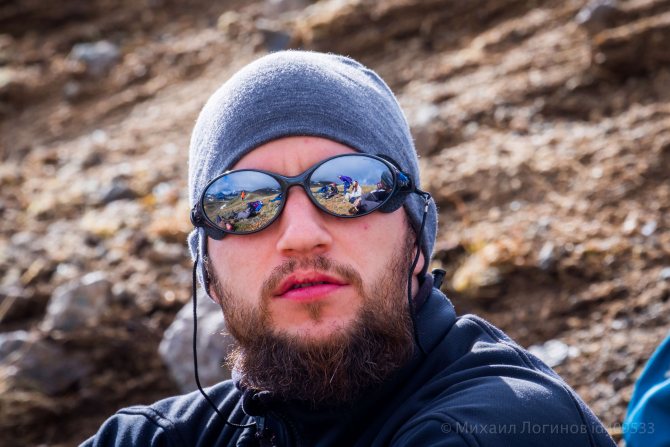
- Repair kit . On a hike, a tourist must be prepared for any surprises. It’s convenient to have a small repair kit on hand, which allows you to quickly repair a backpack, sew up a sleeping bag or pants. It’s good to have strong threads, several needles, scissors, and electrical tape. A multitool is a useful thing, but it’s heavy; you can get by with other, lighter tools. What to take is at your discretion and depending on your skills.
- Matches , lighter. It is always a good idea to have your own matches or lighter with you. Even if there are public ones in the fire set, there is always a risk that they will get wet or get lost. This also ensures your safety in case of emergency.
- Rope . There is no need to take a ship's rope or even an alpine climbing rope on an easy hike. But it’s worth putting five to ten meters of thin, strong rope in your backpack. At least to have something to dry things on after washing.
Practical use of three-layer travel clothing system
So, the three-layer system is a mechanism that reduces the overall thermal conductivity of outdoor clothing in a variety of weather conditions.
The three-layer system itself does not have any top-secret features. A person wearing it also sweats in the heat or during physical activity, and in cold conditions can freeze. Its advantages lie in the effective interaction of layers. Regardless of the degree of physical activity of a person and external weather conditions, the three-layer system is much better than conventional clothing in controlling the level of humidity at the surface of the body, which is necessary to ensure thermal comfort.
Often, to assess the properties of a three-layer system, individual characteristics of its layers are considered, for example, the water resistance and breathability of the membrane are indicated. This certainly gives information about how effective the membrane is, but water resistance numbers are unlikely to help understand how comfortable a given jacket is in certain conditions.
What really matters is not the numbers, but the overall effect. Any clothing has a certain maximum threshold of vapor permeability, and tourist clothing is no exception. If the intensity of body evaporation exceeds the breathing capacity of the system, then moisture will accumulate in thermal underwear and the fleece layer. Water conducts heat much better than air, so replacing air with moisture in the insulation will lead to an increase in the thermal conductivity coefficient of the entire system - heat removal from the body will accelerate. And if the air temperature is low, the wind is blowing, and physical activity has sharply decreased, then most likely there will be unpleasant sensations associated with hypothermia. Therefore, it is better to reduce the activity gradually to allow the internal steam pressure to displace moisture from the thermal underwear and middle layer, and for the membrane to evaporate it.

A moisture-proof film, unlike a membrane, accumulates moisture in the insulation layer, which increases its thermal conductivity and, as a result, heat loss
Sometimes you can come across the statement that the membrane contributes to the loss of heat, which goes away along with evaporation, therefore, in camping conditions, to keep warm, it is better to use a rescue blanket - a film coated with a thin reflective layer of aluminum. In the article on homeostasis, we wrote that there are three types of heat exchange: direct, radiant and heat exchange through convection. The Rescue Thermal Reflective Blanket is excellent at preventing heat loss due to radiant heat transfer and is not blown out. But that's where its advantages end. The body produces moisture even at rest, and if you wrap yourself in a reflective blanket for a long time, this moisture will accumulate in your clothing in the form of condensation and increase its overall thermal conductivity.
The membrane, like a reflective blanket, does not retain heat - both of these materials are too thin. But, unlike a rescue blanket, the membrane prevents the accumulation of moisture, and therefore an increase in the overall thermal conductivity of all layers of clothing, which ultimately allows you to maintain thermal comfort.
Unfortunately, even if you measure the overall thermal conductivity coefficient of three-layer clothing, this is unlikely to help with its choice, because in real conditions the vapor permeability characteristics will depend, among other things, on the temperature and humidity of the surrounding air. The organism itself, or more precisely, its individual characteristics, adds additional uncertainty. Age, gender, state of the cardiovascular system, obesity, intensity of sweating, subjective feeling of climatic comfort can seriously adjust the choice of equipment, even if it is made on the basis of known technical characteristics of materials and manufacturers’ recommendations.
It also matters that maximum heat transfer occurs in the upper part of the body. Therefore, completely different sensations can appear from the same membrane in trousers and jacket. If the legs are not breathable enough, it will take longer to remove all the moisture from the upper body, so a general feeling of discomfort may occur.
You should also take into account the fact that a backpack on the back, its shoulder straps and other objects that fit tightly to the outside of the membrane jacket can reduce its breathability. Using a three-layer system in which the top layer is a membrane hardshell jacket will most likely require gloves - such a jacket does not have insulation and will not warm your hands in your pockets. Temperature discomfort can also occur due to improperly selected shoes, lack of headgear, or excessive ventilation of the throat and chest area. All these factors, not directly related to the three-layer system, can create general discomfort. It is also worth remembering that it is better not to wear hardshell membrane clothing on a naked body - there is no more pleasure and benefit from this than from wearing oilcloth.
Documents and valuables
You cannot go on a hike without documents, money and essentials. Everyone understands this... and periodically forgets.
- Passport (foreign passport). Always worth having with you. If the hike takes place abroad, take your passport with you (preferably with a valid visa). It is also worth taking copies of your passport, as well as photographing the main pages on your phone.
- Money , bank cards. Take a reserve of money, and cash. Bank cards may not be accepted everywhere - you need to be prepared for this.
- Insurance . Often issued by a tourist club. If you apply on your own, pay attention to whether sports, including extreme sports, are included.
- Phone (including charger). There is no need to prove the need for this item to anyone. Keep in mind that the hike may take place in places where there is simply no connection. In addition, if you absolutely need your phone on a hike, get ready for various options for recharging it. Check which parking lots will have sockets (if any), and take a power bank.
- Small hermetic bag . Documents, money and phone must be protected from water first of all. If it is not necessary to take a hermetic bag for all your equipment on a hiking trip, then a small one for documents is quite possible.
When planning a hike, carefully study the list of equipment. If you have questions (and you will definitely have them), ask them to the organizer and experienced tourists. Think about what you should definitely take and what you can do without. You should reserve at least a third of your backpack for community gear. Take less things - most tourists suffer from excess cargo at the beginning. Common sense will always come to your aid!
Light backpacks to you, good dreams and a pleasant journey!

Outer (membrane) layer
It is represented by so-called windbreakers, jackets and also pants made of special membrane fabric. Membrane fabric or membrane is a type of fabric that can allow sweat vapor to pass through from the inside while keeping water out from the outside. Accordingly, there are 2 main parameters characterizing the membrane: the ability to breathe (vapor permeability) and moisture resistance. Vapor permeability is measured in g/m2/24h and indicates the amount of sweat that a square meter of membrane can absorb in 24 hours. Moisture resistance accordingly describes at what pressure in the water column the fabric does not allow water to pass through. This should not be confused with absolute moisture resistance; sooner or later it will get wet anyway. It is worth considering that quite often these parameters are slightly overestimated because... The best results obtained in laboratory conditions are indicated, which in terms of compatibility of factors is somewhat different from real operating conditions. For active tourism, it is recommended to wear clothes with moisture resistance characteristics of at least 10,000 mm h.s. and with vapor permeability from 5000 g per m2. Perhaps the most famous and reputable manufacturer of membrane fabrics is Gore-Tex. If you buy products made from such fabric, you can be sure of its excellent characteristics, but you will have to pay a fairly high price for this. However, Gore-Tex has many competitors with a more affordable price and good qualities. In addition to the material, do not forget about other quite important little details: taped seams, quality of zippers, the ability to adjust the width of the sleeves, the convenience of the hood and the location of pockets.
In conclusion, I would like to say that all of the hiking equipment listed above will work to the maximum only in combination; if any part of the equipment does not cope with its functions, then the overall effectiveness drops sharply. All these rules, of course, are not strictly mandatory, especially since the closer it gets to summer, the less severe the clothing requirements are. This article contains only tips on how to create the most comfortable conditions for yourself using the right hiking clothes. Guided by these principles when choosing clothes for a hike, you will make it much easier for yourself to overcome possible difficulties and you will have more time and energy to enjoy outdoor activities.
Ideal winter set: pants + jacket
In winter in the mountains, a down jacket is invaluable. However, it is not worn while driving, but in parking lots. During active hours, a tourist must have a durable jacket made from waterproof materials that are light in weight.
Today, jackets and pants for winter hiking are made according to the principle of multi-layering:
- top – membrane fabric (Gore-Tex, eVent, Marmot);
- middle layer – insulation;
- the bottom one is a steam wicking fabric.
It is very good if the hood and sleeves are detachable. This way you can adjust the comfort level. It is advisable to buy trousers with a high waist to protect the lower back. “Samosbrosy” (pants with zippers along the entire length of the leg) enjoy an excellent reputation among experienced tourists. However, they are more expensive and can only be purchased in specialized stores.
When choosing outerwear, pay attention to the brands Columbia, The North Face, Patagonia, Marmot, Haglofs. It is advisable to wear a fleece sweater under the jacket (it is better to have two options - thin and thick). And under thick ski pants - thin ones. It is also better to wear double socks (thin, elastic on the body, warm on top).
Advice! A good accessory for a long hike is knee pads. They can help out under heavy loads. And closed shoe covers with rubber soles will protect you from moisture if you have to walk most of the way in deep snow.
Comfortable for work clothes and shoes
Work clothes are designed based on the specifics of the work for which they are intended. But the main thing, the requirement for her, is still the same protection.
I recommend: What is rokhlya
And the convenience of work clothes is an important element of this protection. Uncomfortable, obstructive clothing can be both a direct and indirect cause of injury. If only because working in uncomfortable clothes will tire you faster, which means it will reduce your alertness, increasing the risk of injury. Not to mention the reduced control of your body in uncomfortable clothes or shoes.
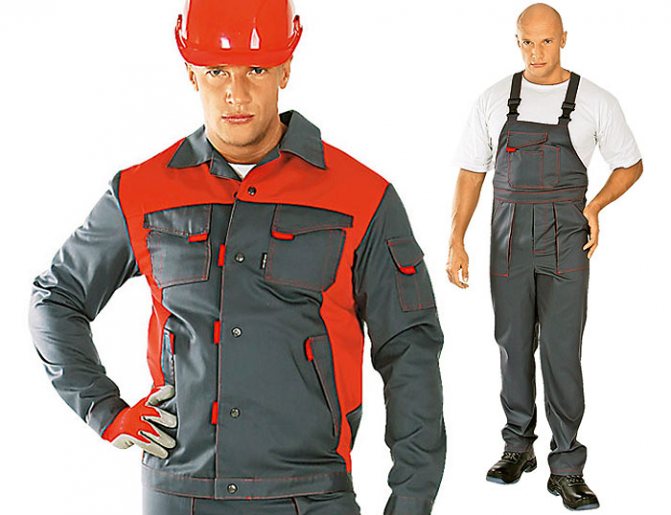
Work clothes
Matches.
Experience shows that matches are the most reliable tool for starting a fire, compared to lighters of any type. The only drawback is that matches are afraid of moisture. For this purpose, each participant in the hike should have at least 2-3 matchboxes, placed separately in 1-2 plastic bags.
The neck of the bags must be tied and tightened with an elastic band. You can put each box inside a children's ball and tie it with a thread, but so that it can be easily untied. To be safe, you can wrap several matches in plastic wrap and place them under your clothes, closer to your body. In this form, the reserve matches will be dry.
You can store matches without a box in a film box or in a glass bottle, but you need to fill the neck with paraffin. It is convenient to take phosphorus hunting matches on a hike. They give a stronger flame and burn 3 times longer than usual. However, you need to beware of such matches of Chinese origin. One of the tourists tried to light such a Chinese hunting match. After striking, the flammable substance stuck to the palm and continued to burn. The result was a 2nd degree burn.
As an addition to matches, you can grab a magnifying glass. If there are no matches in sunny weather, you can use it to start a fire by directing focused light onto the kindling. If the kindling is wet, it is better to have 2-3 tablets of dry alcohol with you.
Requirements for underwear.
The quantity and quality of underwear depends on the duration of the hike. But in any case, it is not advisable to wear or take synthetic underwear with you. It is either very hot or cold.

